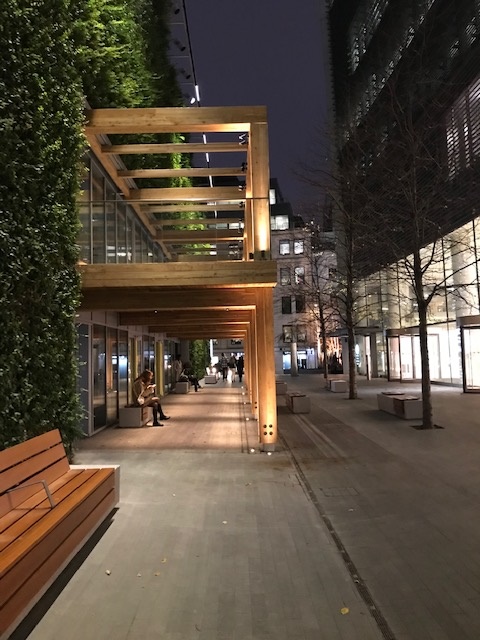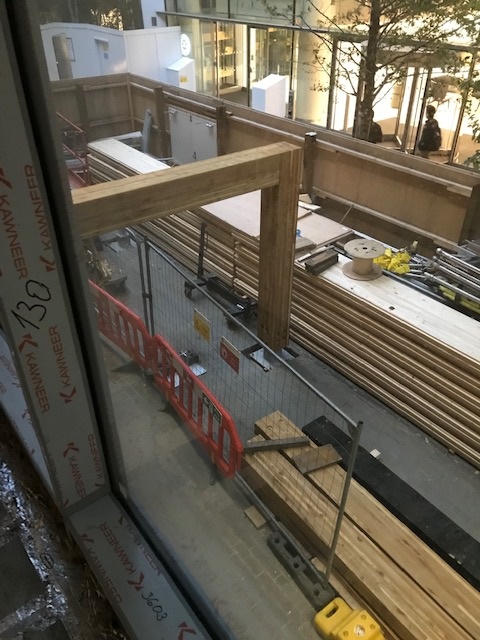Buildings, construction, and building materials account for nearly 40% of global carbon emissions. As the world continues the search for sustainable solutions to the collective carbon challenge, the AEC industry has turned back to a traditional building material: wood.Over the last two years, STO Building Group teams have begun building with mass timber across the US, Canada, and Europe. From adding mass timber components to skyscrapers to constructing corporate campuses from the ground up, here’s what our experts have learned on the job.
THE GREEN EFFECT : For many clients, sustainability is the primary motivation for taking on a mass timber project—and there are plenty of environmental benefits to talk about.

Reducing emissions.
Steel and concrete emit carbon, timber stores it.
“We all know the basics of photosynthesis—the process by which plants absorb CO2, convert it into energy, and release oxygen and nutrients. What most people forget is that the absorbed car- bon is stored or sequestered by the plants as they grow. Younger plants and trees sequester carbon quickly, so planting trees is one
of the greatest ways to help pull
more carbon out of the atmo- sphere.” Peter Kobelt, Director of Mass Timber Solutions, Structure Tone Southwest

Sustainable sourcing.
Building with materials that grow in your own backyard.
“Structure Tone London recently completed a mass timber visiting centre at the Fenchurch Building—also known as the Walkie-Talkie building. The owner decided to use a species of spruce that grows in Dorset along the south coast of England, meaning the project was sourced and built using local resources and labor.” Stephen Davies, Refurbishment Director, Structure Tone London

Forest management.
A market-based approach to forest maintenance.
“On the surface, logging might not seem like a sustainable practice, but if done correctly, it actually helps maintain our forests by clearing out dead growth, making room for healthy growth, and reducing the risk of massive forest fires.” Steve Knowles, Construction Manager, Layton Construction

Recycling.
Timber components can be repurposed. “Looking at circular economies in terms materials being used, 20 years down the line mass timber elements can actually be unbolted, split up, and used for other purposes.” Stephen Davies, Refurbishment Director, Structure Tone London
THE OPERATIONAL IMPACT
On top of the positive environmental effects, building with mass timber often leads to efficiencies that com- pound—saving time and labor costs as the job progresses. “One of the greatest operational bene- fits of mass timber construction is not only the speed but the opportunity for other trades to start work much sooner. A concrete cast-in-place build- ing requires the working platform to fully shored below, which prohibits work to start from a safety and pro- duction capacity. Mass timber structures allow succeeding work to start much sooner. As CLT floor panels are set and anchored, the completed area below is safe to walk under, meaning overhead MEP and other trades are able to start much sooner. The speed of structure installation is also greatly improved. Depending on the building layout, production can range from 10,000sf-12,000sf of floor deck in- stalled per week.” Juan Rodriguez, Vice President of New Construction, Structure Tone Southwest.
BUILDING QUALITY
The wellness benefits of living and working in a biophilic space are well established and incorporating ex- timber elements can certainly posed help designers achieve that aesthetic. However, executing an exposed timber finish is not without challenges. Unlike steel, timber is sensitive to water and humidity, so timing its arrival on-site, and thoroughly inspecting the quality as it’s received, is key. Specialists should examine each piece to


ensure it’s not delaminating or cracking. Then, the construction team is responsible for keeping the mass timber materials within an optimal window of moisture content to avoid the wood splitting. Weather poses another challenge. In the event of rain, some project teams have resorted to wrapping the timber elements on-site in an adhesive plastic wrap to lock moisture out—a solution that lasts less than two weeks—while others take matters into their own hands. As soon as it rains, we have an army of folks with squeegees and micro- fiber towels wiping down any exposed elements because if you let any water sit on the wood, it will stain.” Steve Knowles, Construction Manager, Layton Construction.
THE SAFETY CONCERN
Why has it taken so long for the industry to return to a material that offers so many benefits? Phasing out timber elements in the building industry had a lot to do with the perception that wood structures are not as safe in terms of fire protection and resilience. However, mass timber has a higher char rating than steel and concrete, and buildings constructed with wood are more resilient as well. “Mass timber fire-ratings are integral to the thickness of wood members, eliminating spray fireproofing inherent with steel construction. The resilience and light weight of wood also make it ideal in seismic areas. Blast tests have proven CLT structures to be more sur- vivable than concrete and steel structures.” Shaun Patchell, Building Envelope Manager, LF Driscoll.
